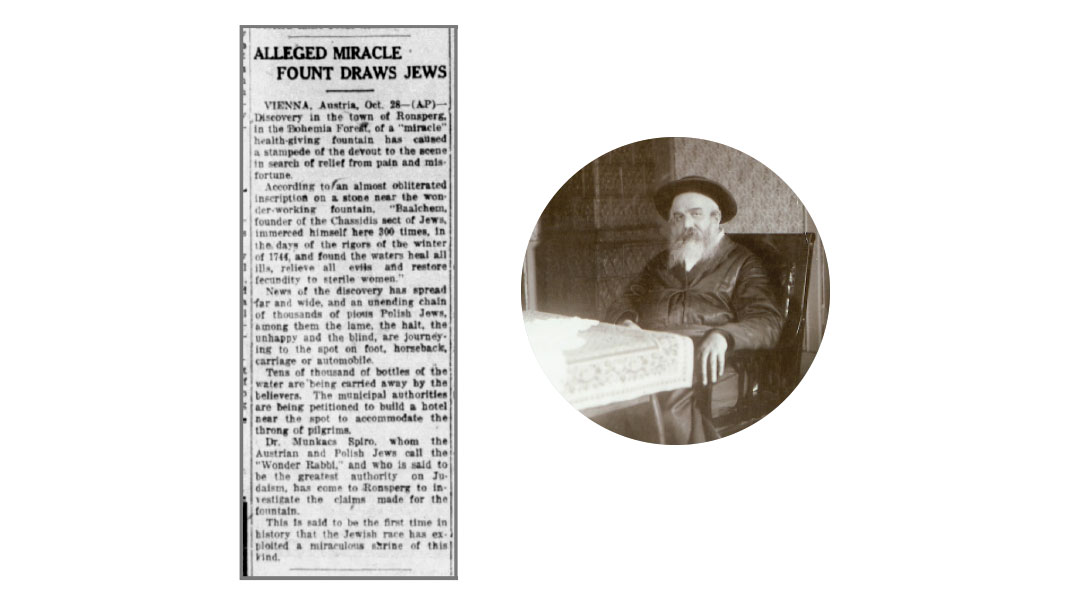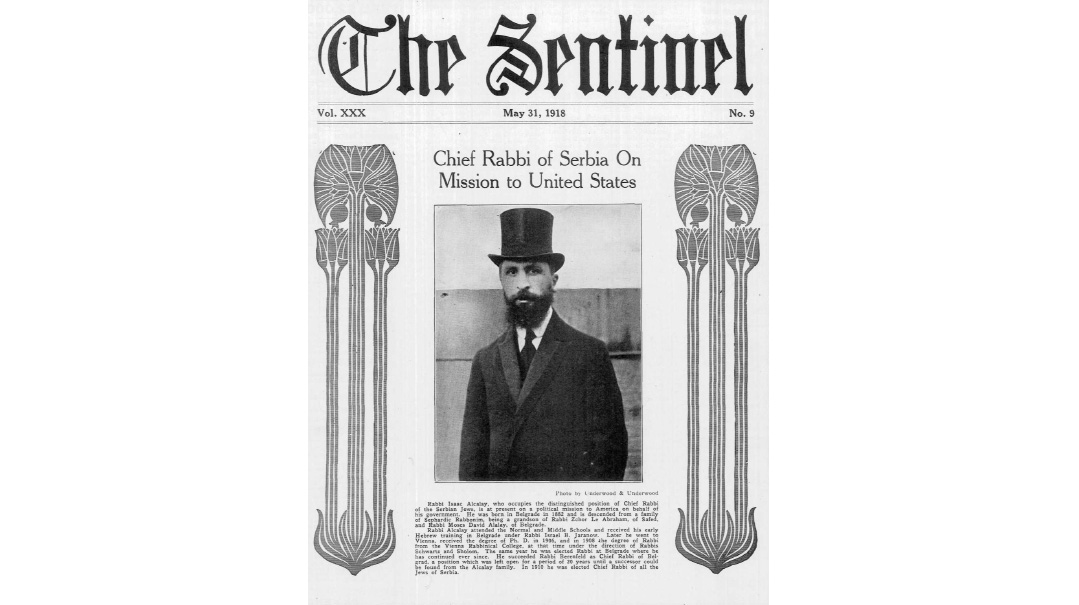The Making of a Miracle Mikveh


The miracle mikveh of the Baal Shem Tov wasn’t the only mass pilgrimage destination for chassidic Jewry in interwar Eastern Europe

Title: The Making of a Miracle Mikveh
Location: Ronsperg, Germany
Document: Bangor Daily News (Bangor, Maine)
Time: 1927
For reasons that remain unclear, in 1744 the Baal Shem Tov sojourned to the German town of Ronsperg (today the town of Pobezovice, Czech Republic). It was a freezing winter day and he toiveled in a local mikveh, one that had allegedly also been used by the Maharal of Prague. The Ronsperg Jews recorded the momentous event in the community chronicles, and erected a stone monument to commemorate their illustrious visitor.
Almost two centuries later, the Minchas Elazar of Munkacs was excited to become aware of the miraculous mikveh. He subsequently sent many of his followers there to submerse in it and drink from its waters. With the Besht’s hometown of Mezhibuzh then inside the Soviet Union, the influential Rav Chaim Elazar Shapiro of Munkacs generated enough interest to make this point of connection to the Baal Shem Tov a place of pilgrimage for thousands of chassidim.
Did you know: From his home in Mezhibuzh, Ukraine, Rav Yisrael Baal Shem Tov traveled far and wide. The brothers Shmuel and Gedaliah, the wealthy managers of the Radziwill estate, were the Baal Shem Tov’s hosts on his visit to Slutzk, White Russia (today Belarus). A 1750 trip found him in several towns in Hungary. On his attempted journey to Eretz Yisrael, he headed south from Galicia toward Romania. The shul in which he davened in Piatra Neamt, Romania, is named for him till this very day.
Nothing new: The miracle mikveh of the Baal Shem Tov wasn’t the only mass pilgrimage destination for chassidic Jewry in interwar Eastern Europe. Lag B’omer beckoned thousands to Krakow to honor the Rema on his yahrtzeit, making it the (local) Meron of its day. Of course, Lizhensk was jam-packed with thousands of chassidim every 21 Adar in honor of the yahrtzeit of the Noam Elimelech zy”a.
(Originally featured in Mishpacha, Issue 825)
Oops! We could not locate your form.







